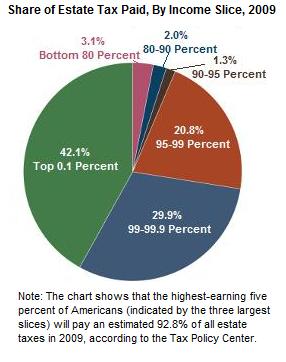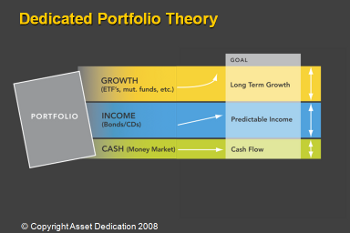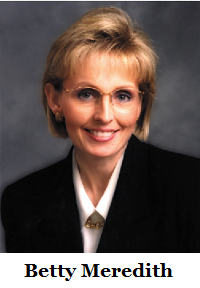When the world’s equity markets buckled last fall like the knees of an aging, exhausted prizefighter in the late rounds of his last title shot, some investors suffered more than others.
The most battered of all, perhaps, were those who were about to retire or had recently retired, whose portfolios were still equity-rich and who planned to live on portfolio withdrawals.
These unfortunate devils were the casualties of so-called “sequence-of-returns” risk. Also known as “timing” risk, it is the risk that you’ll experience negative returns during the years shortly before or after retirement, lock in losses by making withdrawals, and dangerously shorten the life of your savings.
A month ago, RIJ began its series on the various financial risks of retirement with a feature on retiree out-of-pocket health care costs. This week, in the second installment of the series, we take a look at sequence-of-returns risk: what it is, what it can cost, and how best to deal with it.
“There are risks you can afford to bear and risks you can’t afford to bear, and you want to separate the ones that are tolerable from the ones that are intolerable,” said Anna Rappaport, a Chicago-based actuary and consultant. “You have to get rid of intolerable ones, and the tolerable you have to make decisions about.
“The trouble with this risk is that you may not feel it in the first few years. It will hurt you over the longer term. And the one who feels it the most will be the surviving spouse, who will probably be the widow. The money she expected will have already been spent.”
Unplanned retirements
In the past, sequence-of-returns risk wasn’t something a lot of people talked about. If a corporate pension and Social Security were waiting for you at age 65, chances are you could live on your guaranteed assets during early retirement and let your invested assets ride.
Many older Boomers will still enjoy that security. But starting about ten years ago, with increasing numbers of people dependent on defined contribution assets for retirement income, sequence of return has become a bigger issue. The phenomenon of unexpected retirement has also worsened sequence-of-returns risk.
“In the Retirement Confident Studies, a recent series of Employee Benefit Research Institute studies, about four out of 10 people were found to have retired before they wanted to” as a result of disabilities, job loss and the need to care for family members, said Rappaport. They can’t necessarily exit the market at a favorable moment or delay distributions from their savings until the return of a bull market.
In their educational and marketing literature, investment companies began explaining sequence-of-returns risk and warning about it. Prudential Financial, with its “Retirement Red Zone” campaign, has built much of its variable annuity sales strategy around this risk. Manulife has a nifty “slot machine” on its website to jolt visitors into an appreciation of sequence-of-returns risk. John Hancock’s site has an even more sophisticated tool with three slider bars that lets visitors calculate the failure risk of a portfolio based on withdrawal rate, equity allocation, and anticipated length of retirement.
Hare-raising consequences
Sequence-of-returns risk is not linked to retirement per se. It arises when retirees or other investors take regular distributions from assets that are still at risk in the market. When distributions begin, a form of Aesop’s famous fable (based on one of Xeno’s paradoxes) intrudes, and the retiree changes from a tortoise into a hare. Let me explain.
During mid-life, the typical investor contributes to a portfolio, taking advantage of dollar cost averaging to minimize the average cost-basis of his or her portfolio. He ignores short-term fluctuations in the market, trusting in the market’s tendency to produce a more or less predictable long-term average return. The investor is like a tortoise—never stopping to take money out and interrupt the process.
But as soon the investor begins withdrawing an annual income from assets that are still subject to market volatility, the dynamic is reversed and he becomes the hare. Whenever he takes a distribution in a down market, he locks in a loss. If those losses are locked in during the first five years of retirement, he vastly accelerates the decumulation process.
In his 2008 book, “Are You a Stock or a Bond?” York University finance professor Moshe Milevsky offers a hypothetical example of this phenomenon. He supposes two owners of two different funds, each fund with a starting value of $100,000.
The funds deliver a markedly different pattern of returns, but after 20 years, they are both worth $658,000 and so have an identical average historical return. The two investors are equally happy with the results.
It’s a much different story, however, if both investors withdraw $7,000 a year from their funds over the same 20 years. Because one fund loses 18.39%, 4.59% and 19.14% in its first three years, the withdrawals empty it in only 15 years. The other fund, which enjoys mainly gains in its first five years, is worth $198,000 after 20 years, despite the withdrawals.
Sequence-of-returns risk exacerbates longevity risk—the risk of having insufficient income in later life. Withdrawals during a bear market early in retirement do far more damage to portfolios than withdrawals during a bear market later in retirement.
In retirement, we’re all potential hares. The hares who stop to rest for too long near the start of the race will be doomed, financially, to finish far behind those who don’t take rests until later in the race.
Solving the problem
The best way to avoid sequence-of-returns risk is to avoid circumstances that would compel you to take withdrawals from assets whose values are depressed. While that’s easier said than done, there are several ways to do it.
| Remedies for Sequence-of-Returns Risk |
- Deferred variable annuity with a “rollup” and guaranteed lifetime payout.
- A low-risk “bucket” of assets that can provide with five years worth of income.
- A single-premium immediate annuity, for life or a period certain.
- Delay retirement and postpone distributions from invested savings during depressed markets.
- Reduce withdrawal rate during depressed markets.
- Target-date funds with low equity exposure at the maturity date.
|
One solution is simply not to retire in a bear market. Someone who hoped to retire at the end of 2008 with a 401(k) plan invested in stocks and bonds would obviously be better off working another year or two, just to avoid taking distributions from a depressed portfolio and thereby locking in losses.
Many people might be tempted to take Social Security benefits at age 62 or 66 as a way to avoid tapping into their own invested assets, but that’s not necessarily a good idea. Those who expect to live a long time are usually better off maximizing their Social Security benefits by waiting until age 70 to claim them.
Deferred variable annuities with living benefits are one of the newer responses to sequence-of-returns risk. Before the crash, a variable annuity with a “roll-up” during the accumulation period and a guaranteed lifetime withdrawal benefit (GLWB) during the distribution period was one convenient solution to the problem.
These products allow a 55-year-old, for instance, to invest $250,000 and be assured that after a 10-year waiting period he or she could withdraw at least $25,000 a year for life. Many of these products were withdrawn from the market in 2009, but several remain available, albeit with less generous terms.
But GLWB riders tend to impose restrictions and combined insurance fees of more than two percent a year. “I haven’t gotten that enthused about them, because of the prices of the products,” said Jim Tomlinson, a retired John Hancock executive who is now a financial advisor in central Maine.
Target-date funds were once touted as a solution to sequence-of-returns risk. In theory, these funds-of-funds provide a “glide path” that automatically dials down an investor’s portfolio volatility as she approaches retirement. But even many of the mature target-date funds—those sold to people retiring in 2010, for instance—lost a lot of money in the Crash of 2008. That destroyed the illusion that the funds were necessarily safe to tap for income on their target date.
One of the traditional home remedies for this risk is simply to draw down a percentage of assets each year in retirement rather than a specific amount. This would mitigate the impact of reverse dollar cost averaging on the portfolio—that is, you’d lock in a smaller loss during down markets—but it would also mean an inconsistent retirement income. For people with limited assets, it could mean real deprivation.
Having seen the effects of two bear markets in the past decade, an increasing number of advisors are using the so-called bucket method to protect clients from sequence-of-returns risk. This technique, among other things, usually entails drawing an income from a “bucket” of risk-free money for the first five or even 10 years of retirement.
The bucket might consist of cash, or short-term bonds, or a payout annuity. “Buying an income annuity is certainly one way to lessen the amount of risk,” said Tomlinson.
“I would rather do that than take systematic withdrawals and hope that we don’t hit the wrong sequence-of-returns,” he said. “When I tell clients how an annuity works, without using the word annuity, they warm to the idea. If you don’t consider the possibility of the guarantee, you’re planning with one hand tied behind your back.”
© 2009 RIJ Publishing. All rights reserved.




 “It’s liability-driven investing for individuals,” said Huxley and Burns in a recent interview with RIJ. “We call it Dedicated Portfolio Theory. It relies on the same institutional concepts that foundations and endowments have used for years.”
“It’s liability-driven investing for individuals,” said Huxley and Burns in a recent interview with RIJ. “We call it Dedicated Portfolio Theory. It relies on the same institutional concepts that foundations and endowments have used for years.”  On the other hand, there’s nothing magical about this methodology. While aimed at creating a rolling buffer zone between a retiree’s market-sensitive assets and his or her monthly cash flow, it doesn’t necessarily exempt advisors or clients from potentially difficult timing decisions during retirement, Huxley and Burns conceded.
On the other hand, there’s nothing magical about this methodology. While aimed at creating a rolling buffer zone between a retiree’s market-sensitive assets and his or her monthly cash flow, it doesn’t necessarily exempt advisors or clients from potentially difficult timing decisions during retirement, Huxley and Burns conceded. 
 If you’ve seen Seibert lately, you may also have heard him announce that the Certified Retirement Counselor designation, which
If you’ve seen Seibert lately, you may also have heard him announce that the Certified Retirement Counselor designation, which 